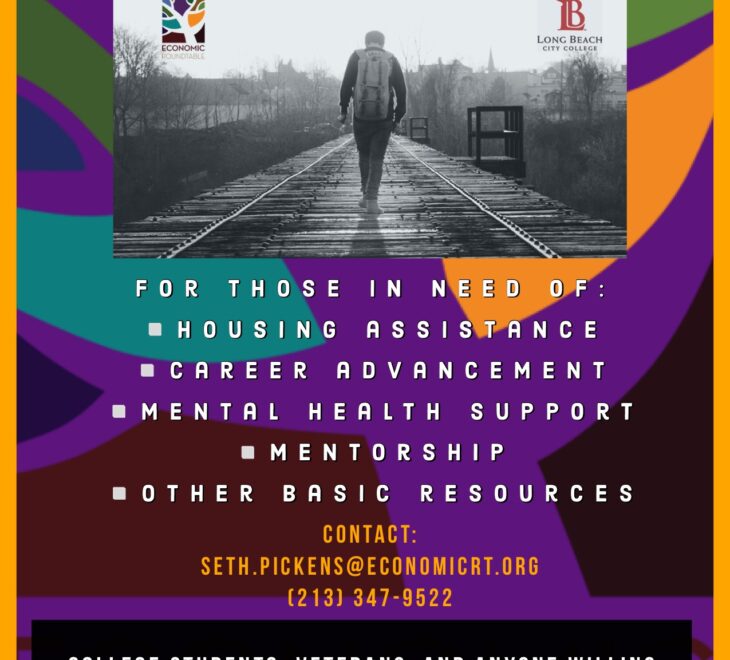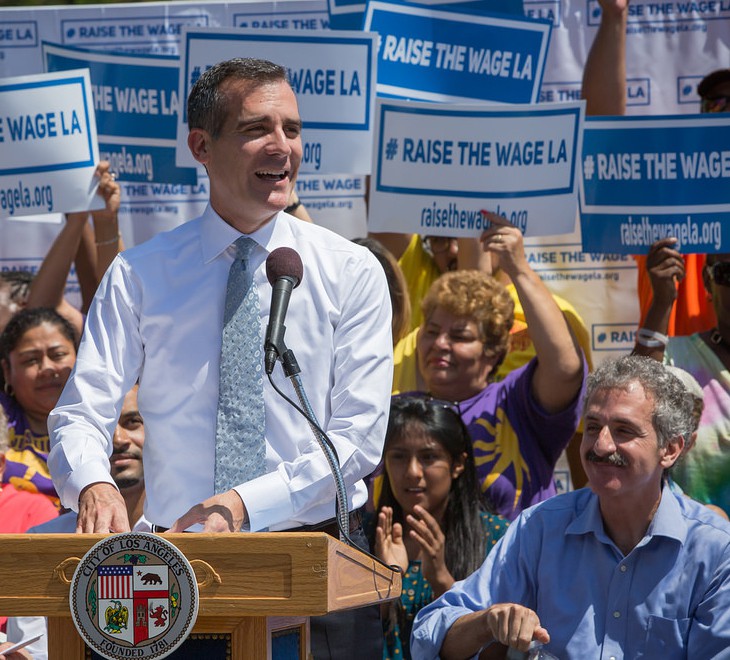FOR IMMEDIATE RELEASE: Wednesday, March 20, 2019
CONTACT: Daniel Flaming, danflaming@economicrt.org, 213-892-8104
Aonya McCruiston, aonya.mccruiston@berlinrosen.com, 310-905-3191
Powerful New Data Tools Predict Homelessness with 75%+ Accuracy
First-of-Their-Kind Screening Tools by Economic Roundtable Researchers Can Help 1,400 People Each Month Avoid Long-Term Homelessness and Reduce Public Costs
LOS ANGELES – As communities across the country struggle to end homelessness, two new free screening tools from the Economic Roundtable could help thousands of the most vulnerable people get access to the public services they need as soon as they become homeless, or even before they are homeless.
In a new report titled Early Intervention to Prevent Persistent Homelessness, the Economic Roundtable outlines two screening tools: one for identifying unemployed workers at risk of persistent homelessness and one for identifying young people at risk of becoming persistently homeless in the first three years of adulthood. Hoping to help governments find and prioritize at-risk people, the Economic Roundtable is sharing these screening tools with Los Angeles County and put them in the public domain for free use in metropolitan areas throughout the United States.
“A job is the best path out of homelessness for most people,” said Daniel Flaming, Economic Round Table President. “With these tools, we can identify and help vulnerable workers and youth who urgently need a hand-up but would otherwise be unseen.”
Utilizing state-of-the-art “Predictive Analytics,” the two tools integrate 30 to 50 pieces of public data—including healthcare access, justice system involvement, foster care, employment, homelessness history, and demographics—to produce a probability ranging from 0 to 100 that someone will become persistently homeless. The probability scores provide a fair, objective way to prioritize people for immediate access to the housing and services they need to get a new job or become successful adults.
“Homelessness is the most visible face of economic and racial inequality. These tools help address that inequity,” said Halil Toros, Economic Roundtable statistician who developed the screening tools.
The tools, developed using records of homelessness and public services for seven million people over fourteen years, are highly accurate. For the top 1% of people with the highest probability scores, the models can predict with 81% accuracy which newly unemployed workers will become persistently homeless, and with 72% accuracy which young adults will become persistently homeless, nine times more accurate than random selection.
“We have no chance of ending mass homelessness in Los Angeles until we can identify those most at risk of becoming persistently homeless and provide them with the help they need long before years on the streets have taken their toll,” said Gary Blasi, UCLA Law Professor Emeritus.
As Los Angeles battles the largest homelessness crisis in the country, the current approach focuses on putting people experiencing persistent homelessness into permanent supportive housing. While this meets a vital need, many people are overlooked until they spend at least a year on the street. It is simpler, more feasible and far less expensive to intervene early and help people get back into stable housing in their community.
The problem is that it is not easy to identify people who have a high risk of staying homeless. Los Angeles City and County voters gave local government $5 billion over ten years, beginning in 2017, to address widespread homelessness. But the continuing flow of people into long-term homelessness still overwhelms the supply of services and housing. The new screening tools address this problem by identifying at-risk individuals so that they can get the help they need right away.
“It will be far better for everyone if we can help people avoid long-term homelessness by using data and the right tools to give high-risk individuals the help they need when they need it,” said Dennis Culhane, University of Pennsylvania Professor of Social Policy.
Other key findings from Early Intervention to Prevent Persistent Homelessness include:
- Two out of five people who fall homeless in Los Angeles County spend at least one year without having a place of their own to sleep in.
- Annual taxpayer costs were more than $10,000 higher for unemployed workers and $3,800 higher for young adults who became persistently homeless than for their counterparts who avoided homelessness.
- Long-term homelessness takes a heavy toll on people, especially on their health. Medical costs are five times higher for persistently homeless residents than for people who do not become homeless.
- African-Americans are the most likely to fall into persistent homeless.
- African American men 45 to 54 years of age are 16 times more prevalent among people who are homeless than in the overall population of Los Angeles.
- For youth, key risk factors for persistent homelessness include being homeless as a child, receiving foster care, lacking family connections, and struggling with mental health and substance abuse.
- For working people, key risk factors for persistent homelessness include being single, previously experiencing homelessness, and having intermittent low-wage employment.
About the Economic Roundtable:
The Economic Roundtable is a nonprofit urban research organization based in Los Angeles that carries out large-scale data analyses to identify actionable solutions to social, economic and environmental problems. To learn more, please visit http://economicrt.org/.
The John Randolph Haynes & Dora Haynes Foundation underwrote this research. To learn more, please visit http://www.haynesfoundation.org/.
###













